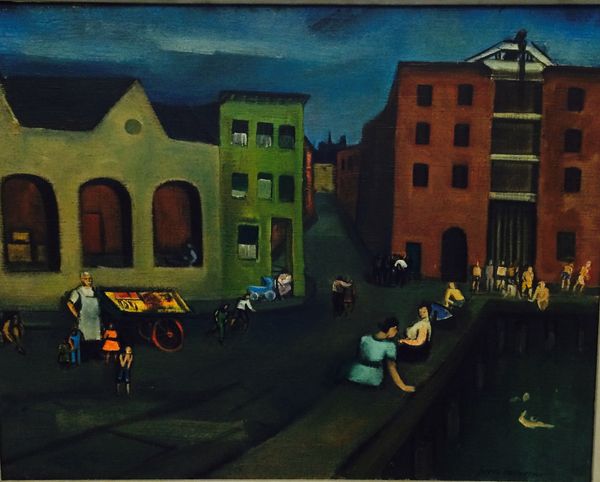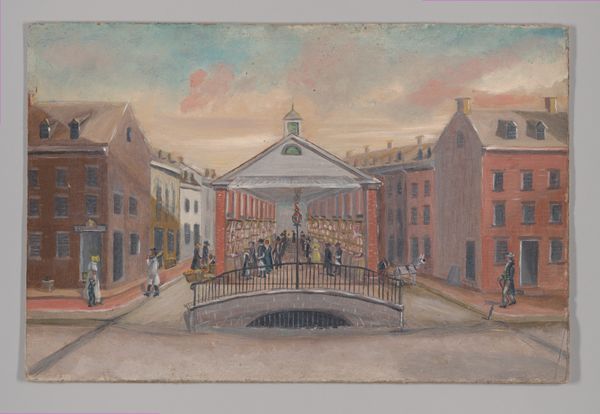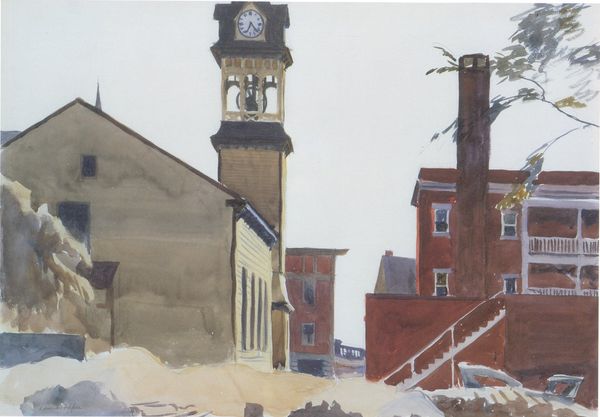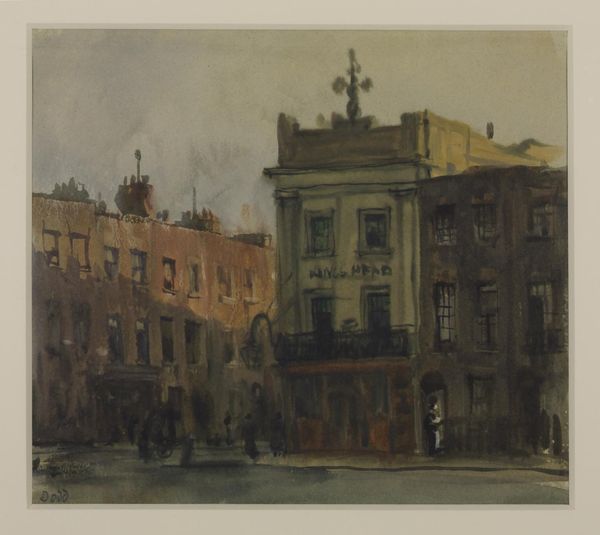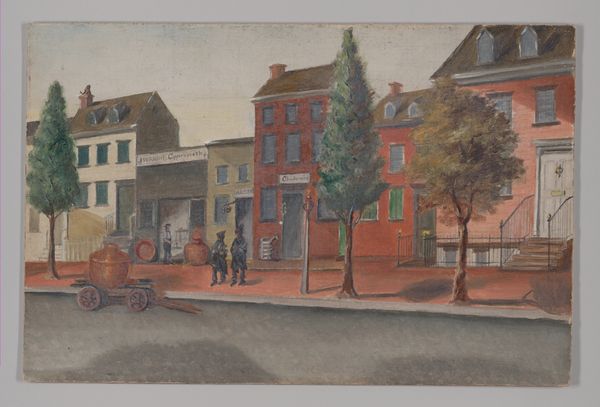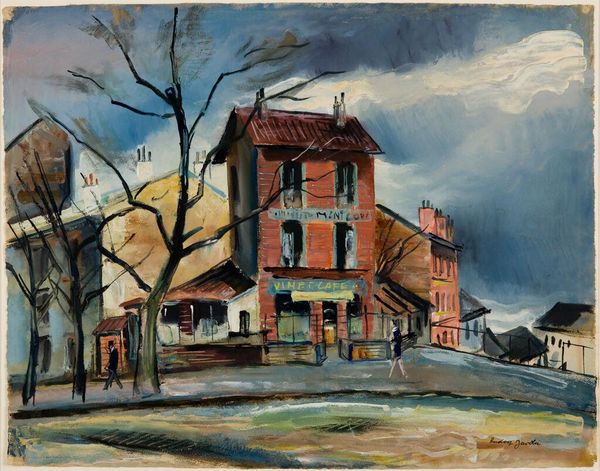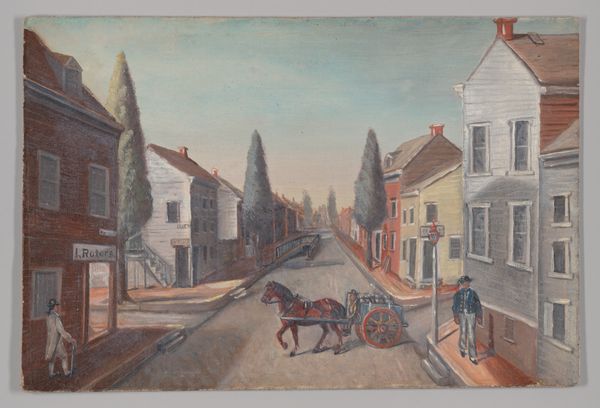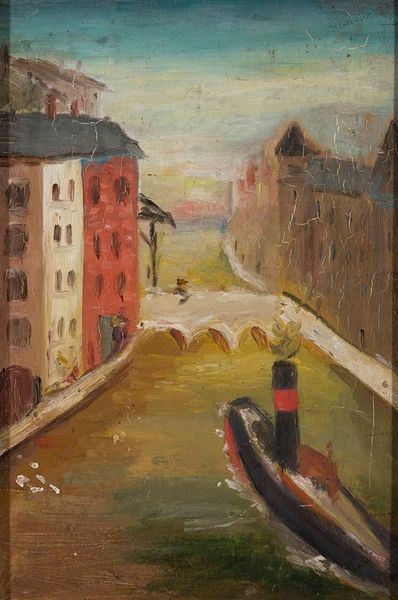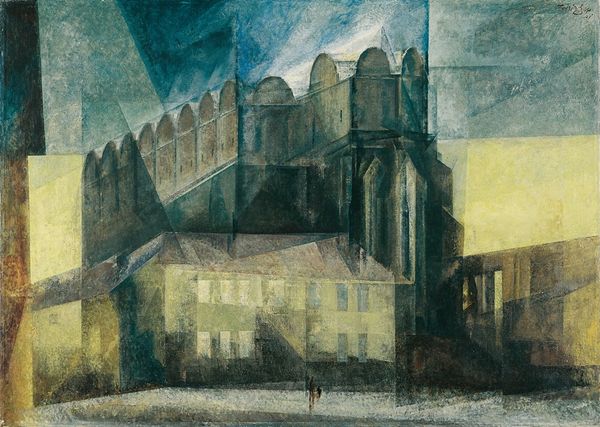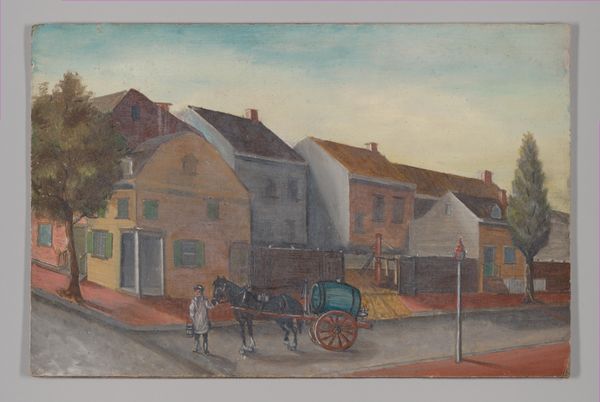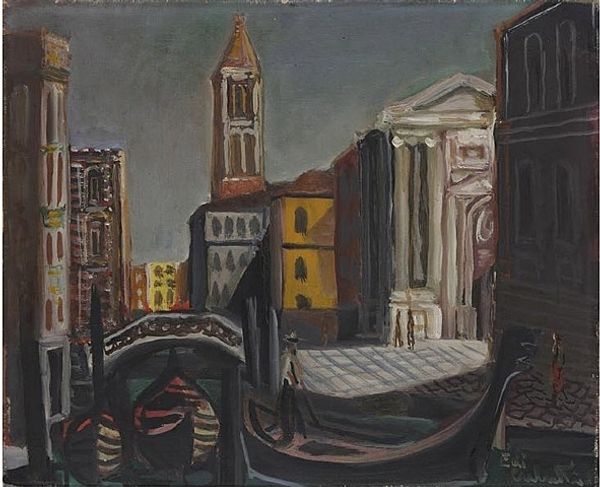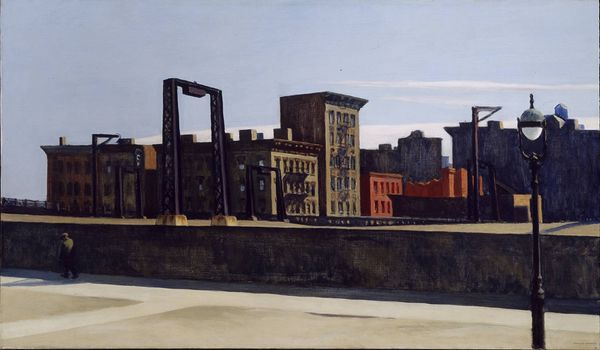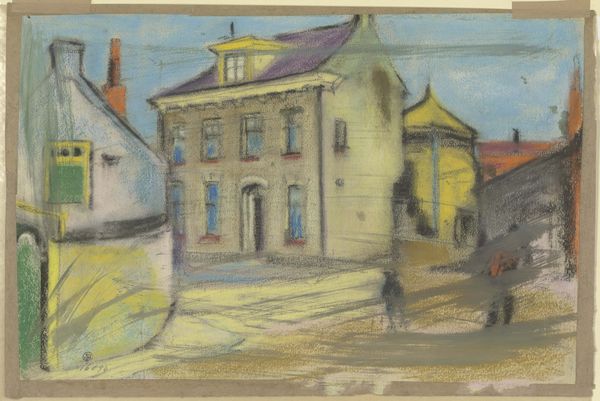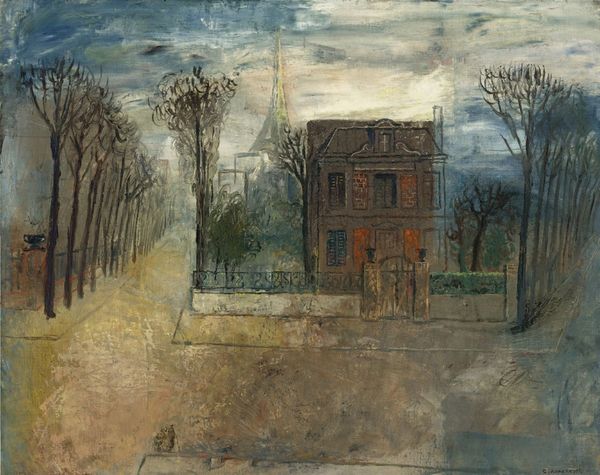
oil-paint
#
oil-paint
#
landscape
#
oil painting
#
facade
#
cityscape
#
regionalism
#
watercolor
#
historical building
#
building
Copyright: Public domain Egypt
Curator: Let’s turn our attention to O. Louis Guglielmi's "Town Square," painted in 1939. What's your first take? Editor: It strikes me as strangely serene, almost unnervingly so. The muted palette and geometric arrangement create this sense of quiet desolation. Is it just me, or does the composition seem almost… calculated? Curator: Calculated is a good word. Guglielmi, particularly in his Regionalist phase, was deeply interested in the impact of the Depression and the socio-political climate. The town square, seemingly the heart of the community, is devoid of people. We should also consider the role of oil paint here, thickly applied to construct simplified and distorted forms. Editor: Precisely! Look how he reduces the buildings to these flattened planes and stark shapes. The color choices—that drab palette, the dull reds and yellows—reinforce the mood. Semiotically speaking, the emptiness speaks volumes about societal strain. And the statue... rigid and solitary in the center. Curator: Absolutely. This connects directly to his involvement with the Artists' Union and his focus on the plight of the working class during this period. His use of perspective and flattened forms are meant to highlight the austerity, but also perhaps the resilience of small town America. Consider also the historical context, as well as the way Regionalism responded to the massive changes brought on by industrialization and urbanization. Editor: But the formality almost undermines any emotional depth. It's a technically sound painting, and, while effective at illustrating historical accuracy, I don’t find it particularly affecting. Guglielmi, in trying to communicate the historical reality of small town life, is presenting a pre-existing set of class dynamics, framed from his personal and material standpoint. Curator: But there's power in that controlled approach, though. It invites us to analyze the underlying social and economic structures that shaped this town square and countless others like it. How labor and community have been structured, broken down. Editor: I see your point. By stripping away sentimentality, he forces us to confront the bare bones of the social landscape. It's a town square reduced to its essential, almost geometrical forms. Curator: Yes, I would say his perspective delivers an intriguing look at the past. Editor: Well, despite our slight disagreement on emotional resonance, it has been really useful exploring "Town Square" from different points of view!
Comments
No comments
Be the first to comment and join the conversation on the ultimate creative platform.
